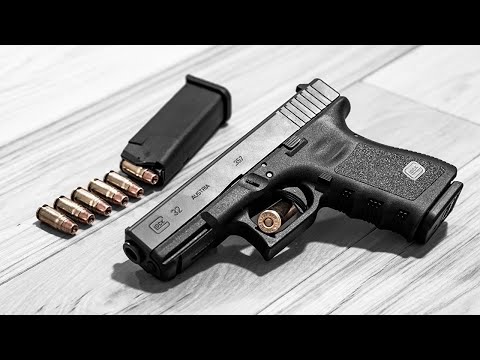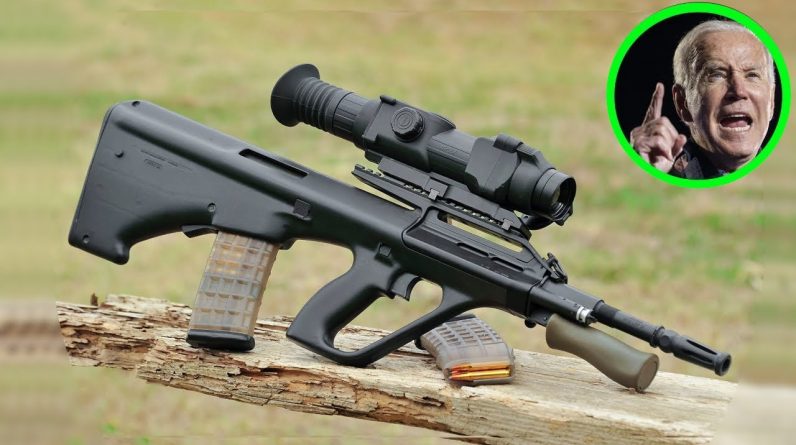maybe at anger way and Commodore rode at one time or another most of us have identified a location in this way by referring to the intersection of two streets or we have said I live between Commodore Road and gala Boulevard at 3:10 anchor way and thus precisely located the house in a city with clearly identified streets this method of giving a location works well the streets and street numbers are easily recognized points of reference by means of which exact locations can be described but how do you accurately describe locations in a foreign land or in an unpopulated rural area no street signs here not even streets yet if a soldier is to function properly he must be able to find his way efficiently from one position to another anywhere in the world and to accomplish this he must have some means of identifying the location of objects or points of reference on the ground in a uniform and precise manner these men for example are in an area previously unknown to them they have just completed a reconnaissance mission which has brought them to this location now they must rejoin their patrol along a road several thousand metres distance at a designated but unmarked point without prior knowledge of the area how can these men find their way precisely and efficiently to a destination they can neither see nor identify the military map provides the answer but the men must be able to utilize the information it contains as you know a map is a drawing to scale of a portion of the Earth’s surface on which natural and man-made features are depicted by symbols lines and colors in addition a military map is a topographic map which shows both relief and the horizontal position of all features in measurable form thus it presents a precise detailed and accurate picture of the area it covers if the military map is to be really efficient however it must include some practical means of locating points at any place on the map or on the ground bus medium or large-scale military Maps like this standard 1 to 50000 scale map are over printed with an orderly system of lines called a military grid because of its relative simplicity the army uses this grid system for the expression of location a grid system consists of two sets of parallel lines intersecting at right angles and forming a series of squares which are equal in size the lines running horizontally hit approximately east and west while the vertical lines run north and south it is obvious that this system of squares will enable one to locate a point by stating within which Square the point lies so for purposes of identification each line is numbered along the edge of the map as well as within the map itself like a well marched City Street each line is clearly marked and can be used in locating any grid Square which borders it you may have noticed that the line numbers printed at the edge of the map contains small figures not found in connection with those printed within the map itself these small figures are included primarily to relate this map to others of adjacent areas when using the military grid system to locate a position on the map they should be ignored use only the large numbers which are called principal digits forget all others keeping this precaution in mind let us see how the grid system is used to locate a position on the map as an example a farmhouse is situated here how would the area or grid squares within which it is located be designated by what are called coordinates made up of numbers derived from the gridlines adjacent to the square coordinates are written as one number but always contain an even number of digits on the military map the first half of these digits is always read to the right the second half of the coordinates is always read up from the bottom this is the first and most important thing to remember in using the military grid always we’d write and then up or it may be easier to remember read right up whenever interpreting grid coordinates now let us see how this rule applies in pinpointing the farmhouse starting at the left edge of the map and reading to the right until we arrive at the first grid line which borders the square with the farmhouse this is grid line zero five these become the first two digits of the coordinates which will identify this grid square again starting at the lower edge of the map read up arriving at the grid line bordering the lower edge of the square this is line 6 for these digits complete the coordinates which identify this grid square as 0 5 6 4 lying to the right and up from the point where the grid lines 0 5 & 6 4 cross the other grid squares are identified in the same manner read write and up to find the proper designation for military operations or reporting purposes however grid square identification is not precise enough on most military maps the space between the grid lines known as the grid interval is 1000 meters the grid square represents an area large enough to accommodate many features in addition to the farmhouse we wish to pinpoint so a more exact position is necessary to accomplish this the grid sides are divided into tenths either by eye or by means of a coordinate scale when this has been done we can see that the farmhouse lies 7/10 to the right of line zero five and eight tenths of a square up from line 6 for these fractional indicators are integrated into the grid square number by keeping in mind that the first half of its digits are red to the right thus the first half of the coordinates now becomes zero five plus the number of tenths 7 and the second half reading up becomes 6 4 plus the number of tenths 8 the final number zero five seven six four eight represents coordinates which locate the farmhouse to within 100 meters this is how the grid system enables you to describe or find the location of features at any point on the military map accurately clearly and easily if you will remember to read right up to aid you in using the grid system every military map carries instructions describing the method we have just seen demonstrated these are found here in what is called the grid reference box the gray reference box is divided into two parts the left portion contains information identifying the map and the area it covers at the bottom it carries a reminder to ignore the smaller figures in any printed grid number and use only the large figures in plotting locations on the map the right part of the box explains how to use the grid in giving or locating a standard reference on the map with an example of a method we have just observed keyed to a point on the map in brief the grid reference box contains the operating instructions for the military grid system by consulting it you will be able to use the grid successfully when you find yourself in a situation like this as you remember these men have just completed a reconnaissance mission through an area they have not known previously now they must rejoin their patrol and appoint some distance away identified only by this number we now recognize as grid coordinates how will they do this we know that grid coordinates are written to be read right up and that the first half of the digits is read to the right using these coordinates the men will begin at the lower left hand corner of the map and weed right until they reach line 1 6 which is indicated by the first two digits of the coordinates the third digit tells them that the location they are looking for is one tenth of a grid square to the right of line one six so a tick mark will be made at that point and the next step is to read up the following two digits direct the readers to move up to line six for this one the final digit indicates that the location is six tenths of a grid square up from this line this is marked off and the men locate the point of rendezvous designated by the coordinates one six one six four six as you can see by properly using the coordinates of the military grid the rendezvous point has been located efficiently clearly and precisely and its relationship to the present position of the map leaders has been accurately plotted with this essential information available the men can now plan the route they will follow to rejoin their squad at the designated location between any two points on a map there are usually several possible routes and in selecting the most suitable relative distance should be among the first considerations with a military map the determination of ground distance between two points is a simple matter thanks to the graphic or bar scales which are printed on each map these are in effect rulers by means of which distances on the map may be measured as actual ground distances in terms of statute miles meters yards or nautical miles their use is easily understood for example this is how you determine the straight line ground distance between two points on the map lay a straight edged piece of paper on the map so that its edge touches both points make a tick mark on the edge of the paper at each point then move the paper down to the appropriate graphics scale and leave the ground distance between the two points but graphics scale is divided into two sections that to the right of the zero is called the primary scale and is marked with four units of measure from this primary scale we see that the straight-line ground distance is more than 3000 meters how much more can be read to the left of the zero on what is called the extension scale this is divided into tenths of a unit and in this instance shows the total distance to be 800 meters more than the 3,000 on the primary scale or a total of 3,800 meters this is how the straight-line ground distance between any two points on a military map is determined to measure distance along a curved line like a stream or winding road the straight edged paper is again used make a tick mark at or near one end of the paper and place it at the point from which the line or route is to be measured then align the edge of the paper along the first straight portion of the route make a tick mark on both map and paper at the end of the aligned portion and keeping both tick marks together pivot the paper until the next straight portion is aligned again make a tick mark on both map and paper and continue in this manner along the entire route taking care to keep the tick marks aligned at each change of the paper’s position until the measurement is complete then move the paper down to the appropriate scale and read the total distance between the two points on the map when the marked distance is greater than the length of the graph it is measured in sections in this case we need two sections of 4,000 meters each plus an additional 200 meters on the extension scale for a total of 80 200 meters this is how growl distance along a winding route is determined on the military map in this example the highway distance is much greater than the straight-line distance a more direct route to the rendezvous point is desirable the map suggests several alternate possibilities but although a route may be direct if it leads across steep hills or up against deep Bluffs or into similar obstacles it is obviously not suitable so before selecting a route these men will carefully study their map to avoid such problems our military map elevation and relief features are indicated by brown contour lines which represent imaginary lines on the ground along which all points are at the same distance above or below sea level the vertical distance between these lines is called the contour interval and our military Maps is shown in the marginal information the contour interval is always in a round figure such as 5/10 or as here 20 feet it is normally constant throughout the area of the map in designating contour lines sea level is always considered zero contour always remember that elevation means vertical distance from sea level the same thing as height and that every point on one contour line is at the same elevation following all the curves bulges and dents in the ground surface a contour line may wander all over the map but it always represents the same elevation with this basic explanation of elevations and contour lines let us now see what we leave features they can identify for us for example when contour lines are evenly spaced and wide apart like this they indicate a uniform and gentle slope you can walk up such terrain easily and rapidly with a minimum of effort when the contour lines are closely and evenly spaced however a uniform steep slope is shown but closer the lines are together the steeper the slope a steep slope can be awkward and tiring to traverse and in planning cross-country routes such conditions should be avoided whenever possible when contour lines converge or run so closely together that they merge into a single line commonly called a carrying contour it indicates a cliff at that location obviously you want to avoid this and a careful study of your map will enable you to do so lines spaced closely together at the top of a hill and wider at the bottom show a slope to be concave a concave slope is hollow and has visibility features that can be important in combat situations if you are on the side or top of the hill and there’s an enemy at the bottom of its concave slope you can see him and he can see you thus when you need cover and concealment remember that contour lines closely spaced at the top of a hill and wide at the bottom indicate a concave slope the reverse is true when the lines at the top of a hill are widely spaced and those at its bottom are close together such an arrangement of contour lines depicts a convex or bulging slope the opposite of what we have just seen from the top of a slope like this there is quite an area below the Bulge which will be hidden from view for the enemy or for yourself this means natural concealment from observation in planning movements under combat conditions remember that a convex slope shown by widely spaced lines at the top and close ones at the bottom means poor visibility from above the Bulge when contour lines are spaced well apart and form a series of widely spread B’s a valley is indicated a valley is frequently the result of a cutting action of a river or stream and its bottom usually will offer low and reasonably level ground for passage or the limited manoeuvring of small military units a series of sharp V’s however indicates a draw a stream course that has not developed into a valley the military difference between a valley and a draw is in terms of movement a valley has enough reasonably level ground to permit the deployment of a military unit a draw like this one does not there are other topographic features both natural and man-made which can be identified by contour lines clotheslines for example represent a hill by studying the shape of these lines you can readily visualize the actual hill they depict when contour lines form a series of use with their open ends pointing toward high ground a ridge is indicated this is a very short Ridge others may be miles long or straight but whenever you see the contour lines forming a series of use with their open ends pointing to a high ground you can tell they represent one end of a ridge when two hills or a ridge of the hill are enclosed by the same contour line it indicates a saddle as a general rule a saddle is a noticeably low point along the crest of a ridge such a formation is important since it provides the easiest way of crossing a ridge these closed contour lines with tick marks pointing in represent a depression in the Earth’s surface if tick marks are used on contour lines they always appear on the downhill side of the contour you should remember that for a depression to be shown on a map it must be large enough to appear to scale when contour lines form straight lines parallel to a man-made feature such as a road or railroad it indicates a cut modern highways could not be built on level grades without cutting through Hills like this here tick marks are used but pointing away from the contour line which parallels the road this means that the roadway has been built up above the surrounding level by what is called a fill whenever a straight and parallel contour line adjacent to a man-made feature passes over a small stream gully or depression our fill is indicated tick marks point toward the bottom of the fill these then are some of the topographic features which contour lines will indicate on the military map with these features in mind let us now see what route these men have chosen to their rendezvous point and why they have decided to move away from their present location and cross the medium-duty hard surface road to this stream then they will turn left and head upstream along its smooth and gently rising valley keeping the high ground before them were men will follow the stream to its source approximately 150 meters from this unimproved dirt road they will follow this dirt road to the hard-surface road and then turn left and be within 200 meters of their destination at no time along this route will any major topographic obstacles or obstructions be encountered thanks to their careful study of air map the men know that the way they have chosen will be as easy as walking along a road and shorter this is typical of the information your military map can give you information that will get you to your destination precisely efficiently and safely in combat the ability to read and interpret a military map may well mean the difference between life and death and the only way you can acquire this ability is through study practice and experience remember that coordinates identify a location on the military map and are written to be read right up the first half of the digits read to the right the second half read up using these coordinates as an example you begin at the lower left-hand corner of the map and read to the right using only the large numbers until you arrive at the line indicated by the first two digits 1 6 the third digit tells you that the location you seek is one tenth of a grid square to the right of line 1 6 so you make a tick mark at this point and are ready now to read up the next two digits direct you to move up to line 6 4 the final digit indicates that the location is 6/10 of a grid square up from this line so you’ll mark this off and locate the point designated by the coordinates one six one six four six burn to use this fast simple and precise method of locating points on the map and you will have taken a long stride toward mastery of the military map in map reading remember that you can determine the ground distance between two points by marking the map distance between these two points on the straight edge of the paper and then reading the ground distance directly from the appropriate scale in the lower margin also learn the purpose of contour lines and how to recognize the common topographic features they depict know that when contour lines are evenly spaced and wide apart they indicate a uniform and gentle slope but when contour lines are closely and evenly spaced they represent a uniform steep slope remember the closer the lines the steeper the slope here where the contour lines run so closely together they touch they indicate a cliff keep in mind also that contour lines show the shape of a slope when spaced closely at the top and wide on the bottom the slope is concave or Hollow when widely-separated on top and close at the bottom the slope is convex or bulging out an evenly spaced series of wide B’s portrays a valley wide and smooth enough for easy movement on the other hand sharply pointed B’s indicate a draw once you have learned how to read and interpret contour formations as well as how to use the military grid and the measurement scales you will come to appreciate how in time of need the military map can truly be a soldier’s best friend








